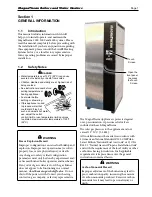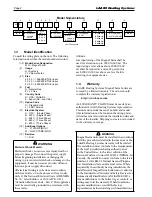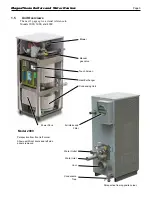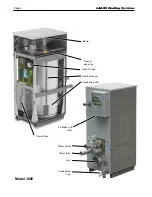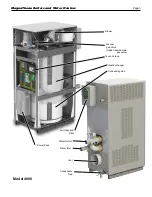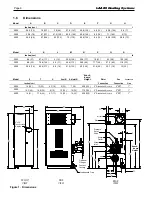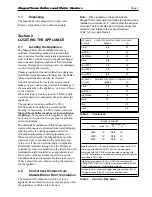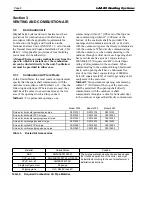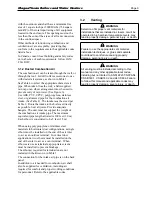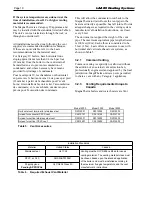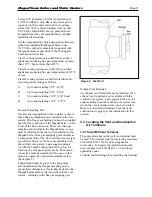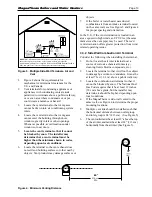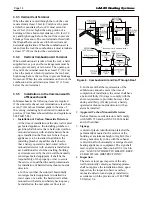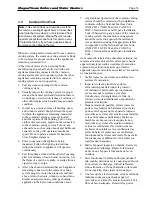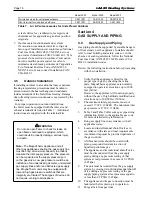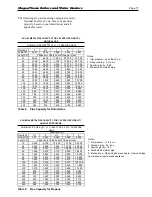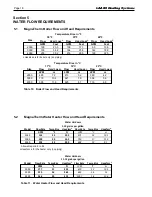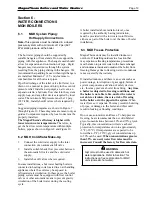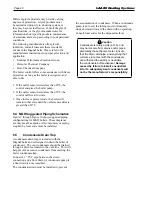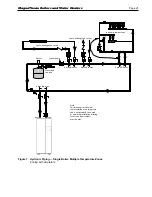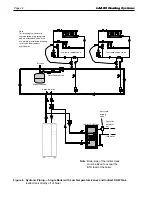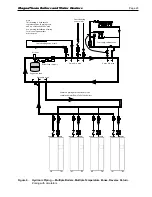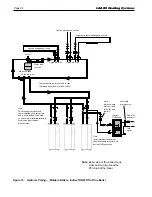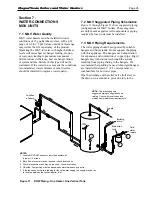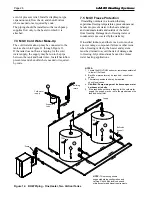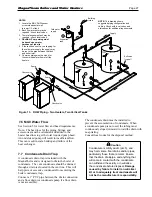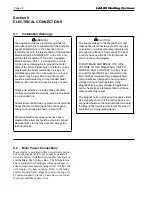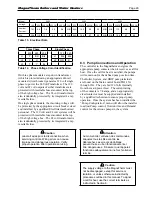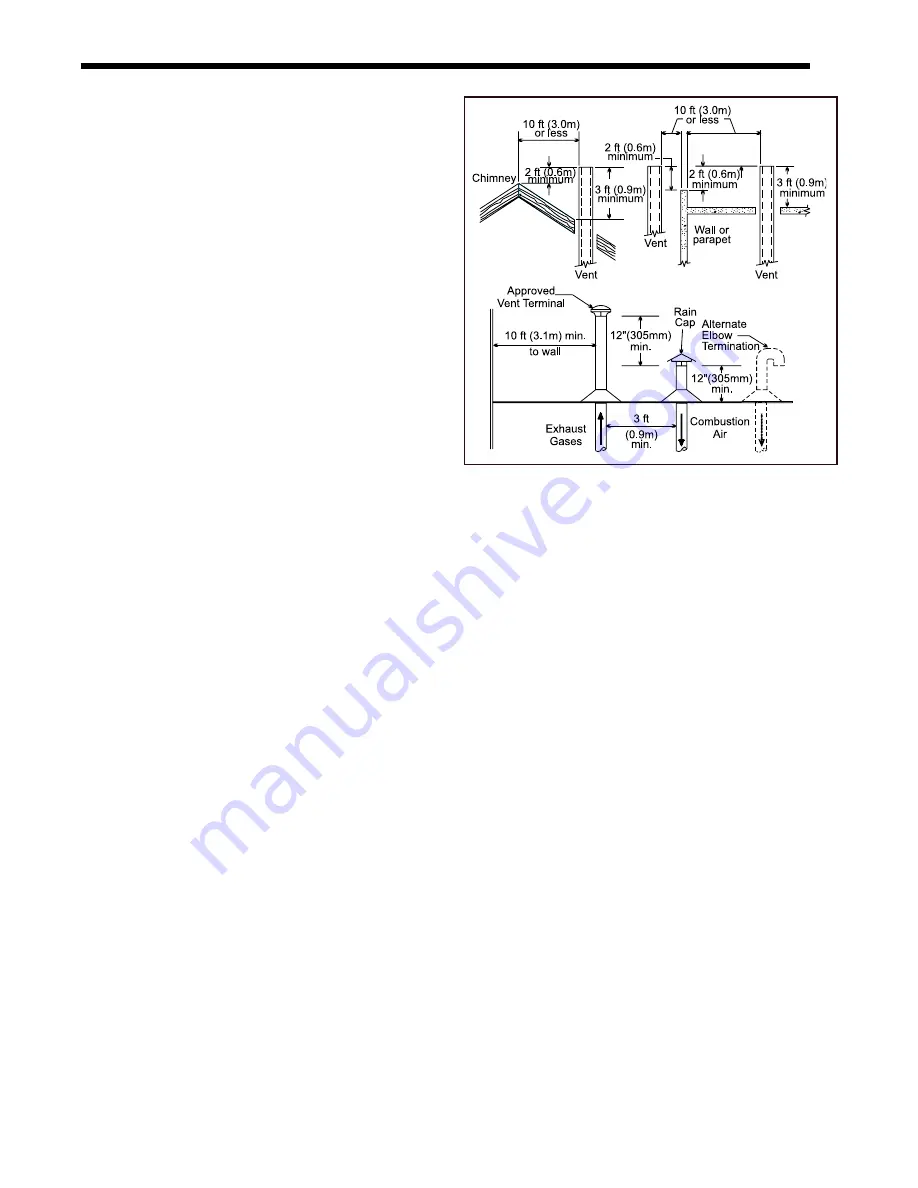
LAARS Heating Systems
Page 14
3.3.3 Vertical Vent terminal
when the unit is vented through the roof, the vent
must extend at least 3 feet (0.9 m) above the point
at which it penetrates the roof. it must extend at
least 2 feet (0.6 m) higher than any portion of a
building within a horizontal distance of 10 feet (3.0
m), and high enough above the roof line to prevent
blockage from snow. The vent terminal offered with
the MagnaTherm can be used in both vertical and
horizontal applications. when the combustion air is
taken from the roof, the combustion air must terminate
at least 12” (30 cm) below the vent terminal.
3.3.4 Vertical Combustion air terminal
When combustion air is taken from the roof, a field-
supplied rain cap or an elbow arrangement must be
used to prevent entry of rain water. The opening on
the end of the terminal must be at least 12” (30 cm)
above the point at which it penetrates the roof, and
high enough above the roof line to prevent blockage
from snow. when the vent terminates on the roof, the
combustion air must terminate at least 12” (30 cm)
below the vent terminal.
3.3.5 Installations in the Commonwealth
of massachusetts
in Massachusetts the following items are required
if the side-wall exhaust vent termination is less than
seven (7) feet above finished grade in the area of
the venting, including but not limited to decks and
porches. (From Massachusetts Rules and regulations
248 cMR 5.08.)
1.
Installation of Carbon Monoxide Detectors
At the time of installation of the side wall vented
gas fueled appliance, the installing plumber or
gas-fitter shall observe that a hard-wired carbon
monoxide detector with an alarm battery back-
up is installed on the floor level where the gas
appliance is to be installed. in addition, the
installing plumber or gasfitter shall observe
that a battery operated or hard-wired carbon
monoxide detector with an alarm is installed on
each additional level of the dwelling, building
or structure served by the side-wall horizontally
vented gas fueled equipment. it shall be the
responsibility of the property owner to secure
the services of qualified licensed professionals
for installation of hard-wired carbon monoxide
detectors.
a. in the event that the side-wall horizontally
vented gas fueled equipment is installed in a
crawl space or an attic, the hard-wired carbon
monoxide with alarm and battery back-up may
be installed on the next adjacent floor level.
b. in the event that the requirements of the
subdivision cannot be met at the time of
completion of installation, the owner shall have
a period of thirty (30) days to comply with the
above requirements, provided, however, that
during said thirty (30) day period, a battery
operated carbon monoxide detector with an
alarm be installed.
2.
Approved Carbon Monoxide Detectors
Each carbon monoxide detector shall comply
with nFPA 720 and be AnSi/UL 2034 listed
and IAS certified.
3.
Signage
A metal or plastic identification plate shall be
permanently mounted to the exterior of the
building at a minimum height of eight (8) feet
above grade directly in line with the exhaust
vent terminal for horizontally vented gas fueled
heating appliance or equipment. The sign shall
read, in print no less than one-half (1/2) inch in
size: “GAS VEnT DiREcTLy BELOw, KEEP
cLEAR OF ALL OBSTRUcTiOnS.”
4.
Inspection
The state or local gas inspector of the side-
wall horizontally vented gas fueled appliance
shall not approve the installation unless, upon
inspection, the inspector observes carbon
monoxide detectors and signage installed in
accordance with the provisions of 248 cMR
5.08(2)(a) 1-4.
figure 6. Combustion air and Vent through roof
*
*
*
*
*
*
*
In Canada, refer to CAN/CSA
B199.1


